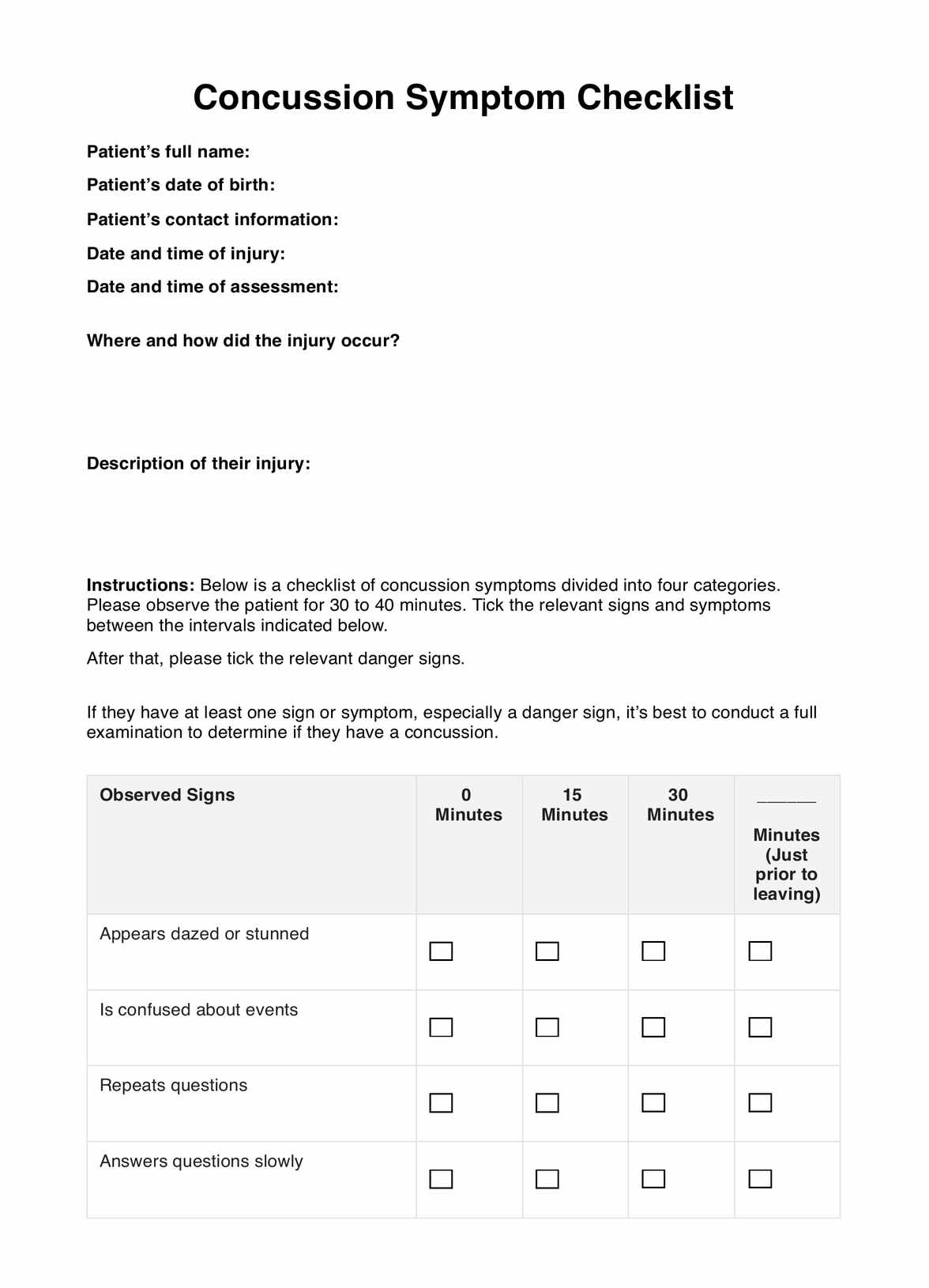Medical professionals who specialize in treating concussions, sports doctors, sports coaches and managers, patients' colleagues, students' teachers, parents, and guardians. Anyone can use our template since it reports and refers patients to healthcare professionals. It’s also a monitoring tool.

Concussion Symptom Checklist
Learn about Concussion Symptom Checklists, then download our PDF template and use it for your practice!
Use Template
Concussion Symptom Checklist Template
Commonly asked questions
No. It’s more of a screening tool than a diagnostic tool. Further testing should help you diagnose patients. This tool should only help you identify the possibility of a concussion.
It depends on what has been discussed with the healthcare professional and the confirmed severity of the concussion. Some might use this one or twice a day. Some might be told to use the checklist every two days.
EHR and practice management software
Get started for free
*No credit card required
Free
$0/usd
Unlimited clients
Telehealth
1GB of storage
Client portal text
Automated billing and online payments











